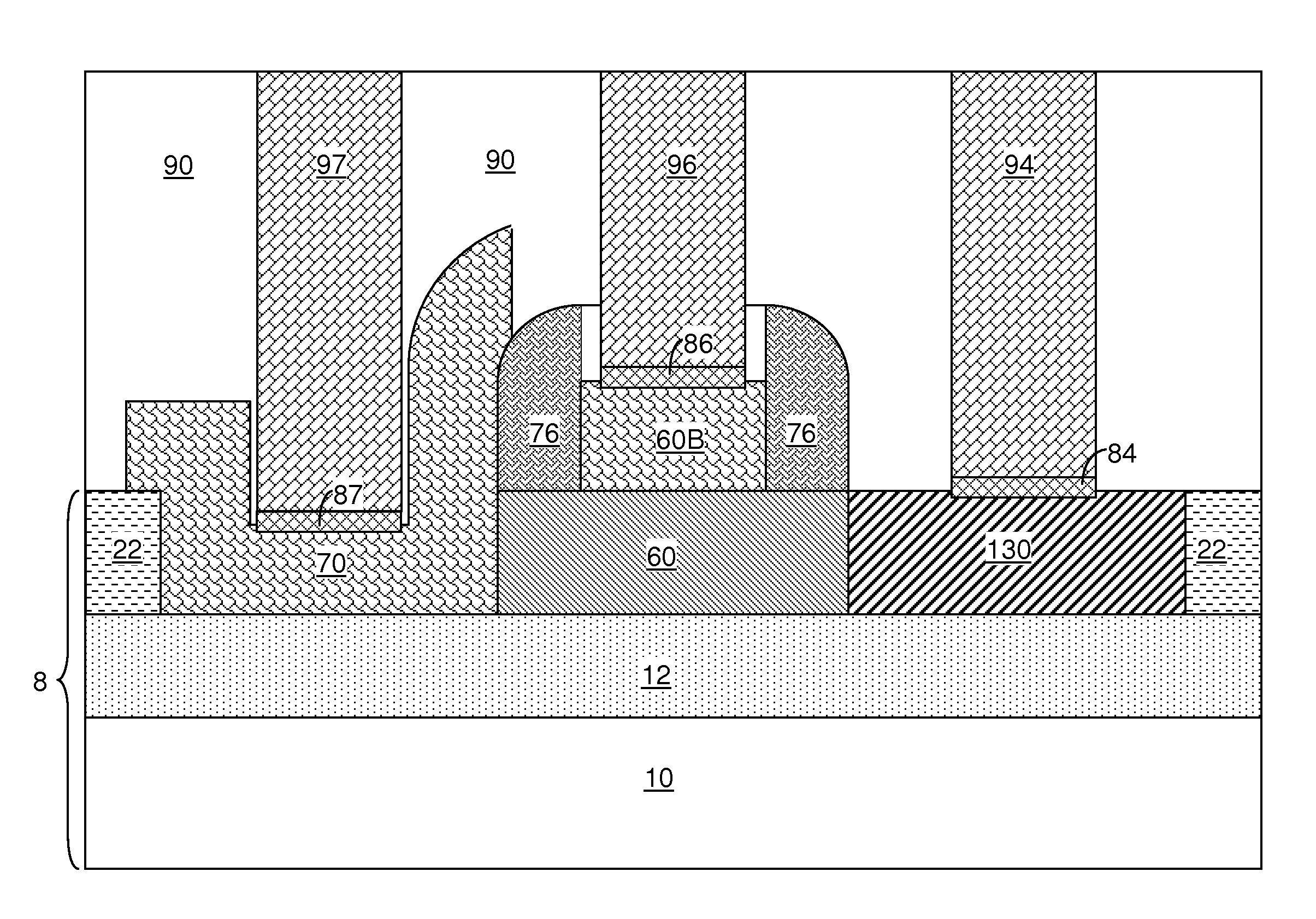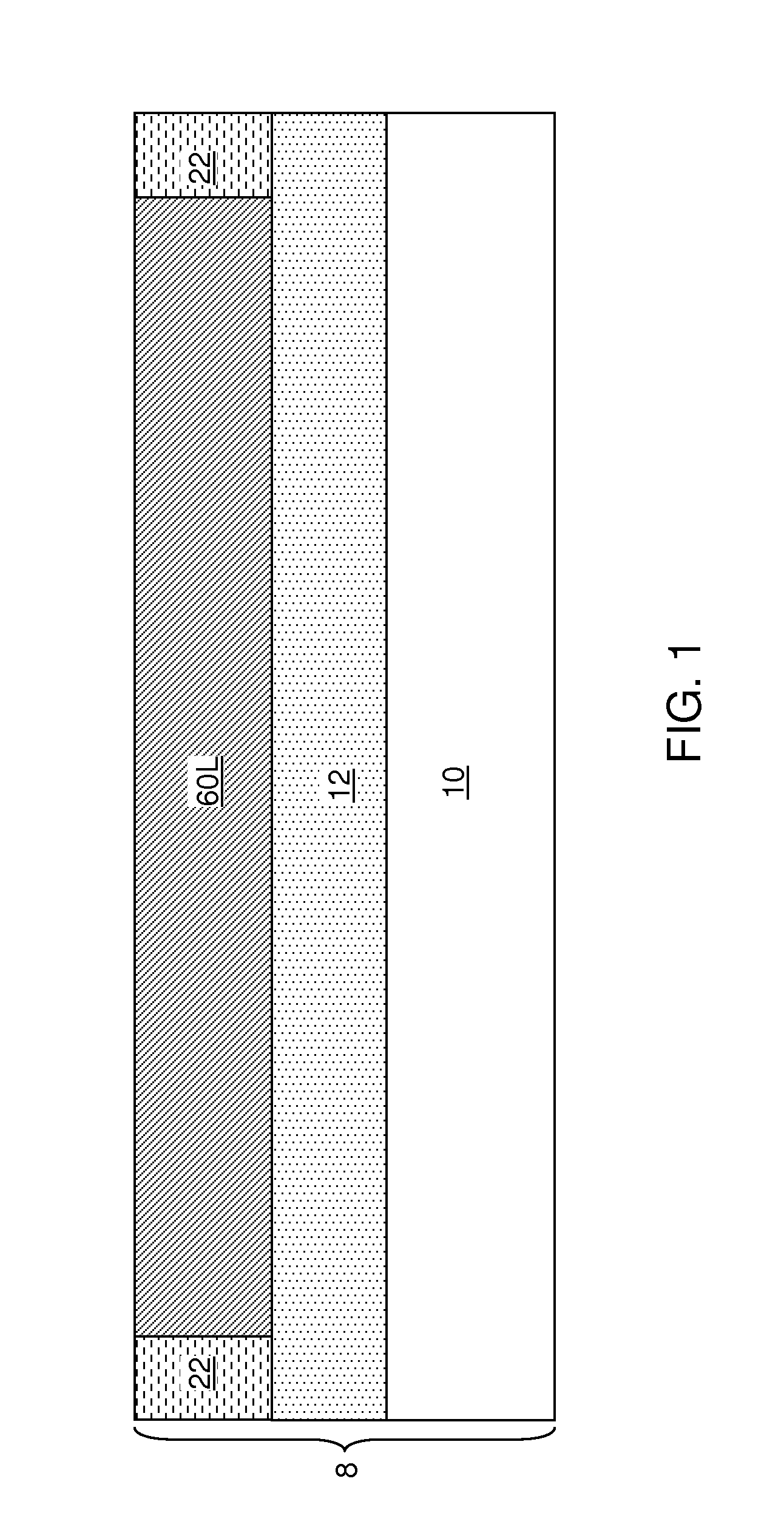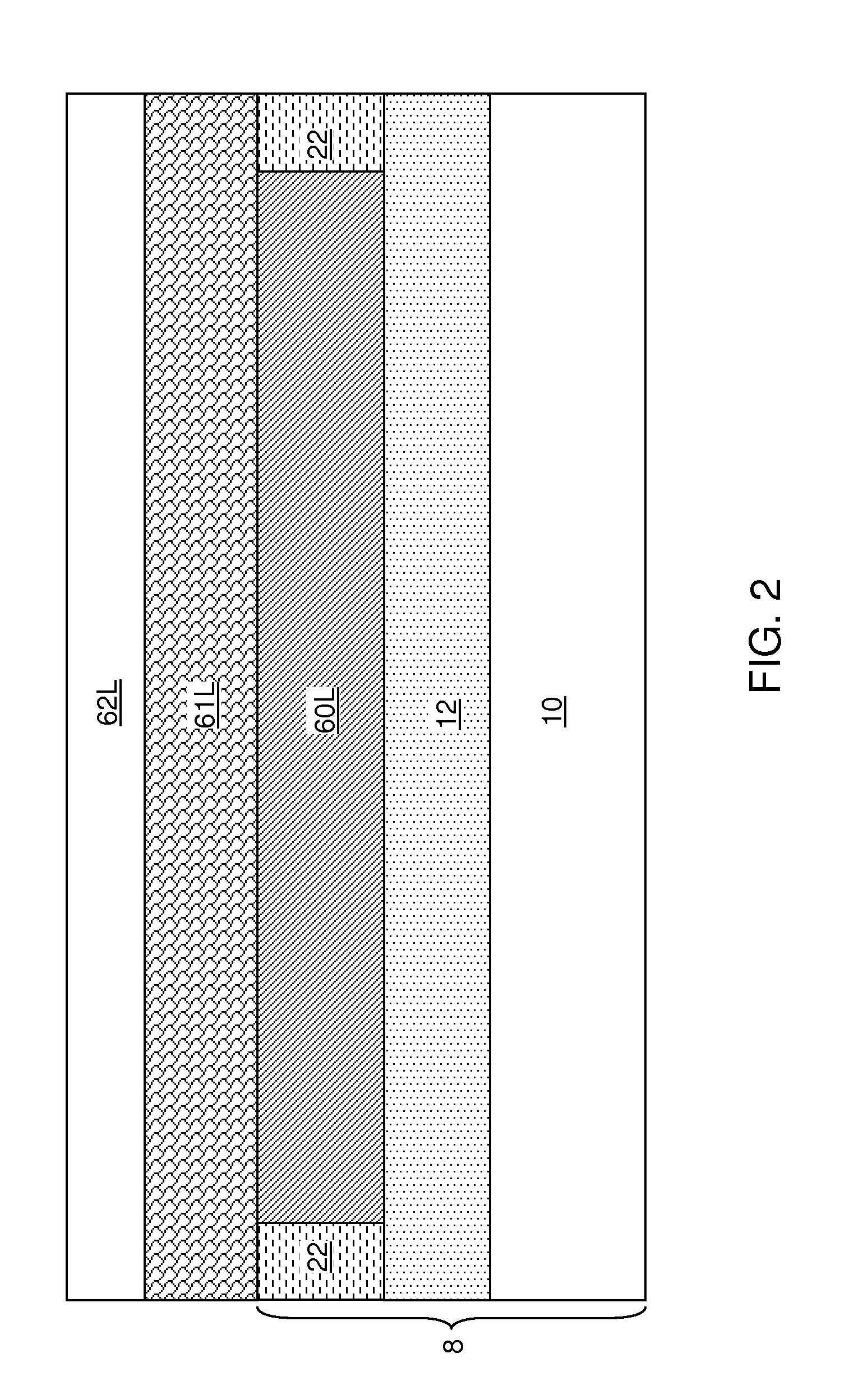Horizontal polysilicon-germanium heterojunction bipolar transistor
a technology of polysilicongermanium and heterojunction, which is applied in the direction of semiconductor devices, basic electric elements, electrical equipment, etc., can solve the problem of not being able to increase the ge concentration in the base region of sige alloy further, and achieve the effect of reducing the emitter-base bias
- Summary
- Abstract
- Description
- Claims
- Application Information
AI Technical Summary
Benefits of technology
Problems solved by technology
Method used
Image
Examples
first embodiment
[0031]Referring to FIG. 1, a first exemplary structure according to the present disclosure includes a germanium-on-insulator (GOI) substrate 8. The GOI substrate includes a handle substrate 10, a buried insulator layer 12, and a top germanium layer 60L having single crystalline germanium. The handle substrate 10 can include a semiconductor material, a dielectric material, and / or a conductive material. If the handle substrate 10 includes a semiconductor material, the handle substrate 10 can be a single crystalline silicon layer, a polysilicon layer, a single crystalline germanium layer, a polycrystalline germanium layer, a single crystalline silicon-germanium alloy layer, a polysilicon-germanium alloy layer, or a combination thereof.
[0032]The buried insulator layer 12 includes a dielectric material such as silicon oxide, silicon nitride, silicon oxynitride, germanium oxide, germanium nitride, germanium oxynitride, or a combination thereof. The thickness of the buried insulator layer ...
third embodiment
[0064]Referring to FIG. 15, a third exemplary structure according to the present disclosure is derived from the second exemplary structure of FIG. 8 by forming an emitter-side trench 69 employing the same processing step as in FIG. 10 without forming a dielectric masking layer 140 illustrated in FIGS. 9 and 10. Thus, a photoresist (not shown) can be applied over the second exemplary structure of FIG. 8 and lithographically patterned to form an opening in the emitter side area ESA. The periphery of the opening in the photoresist can overlie the extrinsic base cap 62 and the portion of the shallow trench isolation structure 22 around the emitter side area ESA. The disposable emitter-side structure 71 is etched to form an emitter-side trench 69 as illustrated in FIG. 10. However, a dielectric masking layer of FIG. 10 is not present in the third exemplary structure at this step.
second embodiment
[0065]A doped polysilicon layer 70L having the same composition and thickness as in the second embodiment can be deposited employing the same deposition methods. The doped polysilicon layer 70L can be formed over the extrinsic base cap 62, the dielectric spacer 76, the collector 130, and the shallow trench isolation structure 22 and within the emitter-side trench 69 as a conformal layer having substantially the same thickness on vertical portions and horizontal portions. The doped polysilicon layer 70L has a doping of the second conductivity type.
[0066]Referring to FIG. 16, the doped polysilicon layer 70L is lithographically patterned, for example, by applying a photoresist (not shown), lithographically patterning the photoresist, and transferring the pattern in the photoresist in the underlying doped polysilicon layer 70L by an etch that employs the photoresist as an etch mask. The photoresist is subsequently removed. A first remaining portion of the doped polysilicon layer 70L for...
PUM
 Login to View More
Login to View More Abstract
Description
Claims
Application Information
 Login to View More
Login to View More - R&D
- Intellectual Property
- Life Sciences
- Materials
- Tech Scout
- Unparalleled Data Quality
- Higher Quality Content
- 60% Fewer Hallucinations
Browse by: Latest US Patents, China's latest patents, Technical Efficacy Thesaurus, Application Domain, Technology Topic, Popular Technical Reports.
© 2025 PatSnap. All rights reserved.Legal|Privacy policy|Modern Slavery Act Transparency Statement|Sitemap|About US| Contact US: help@patsnap.com



